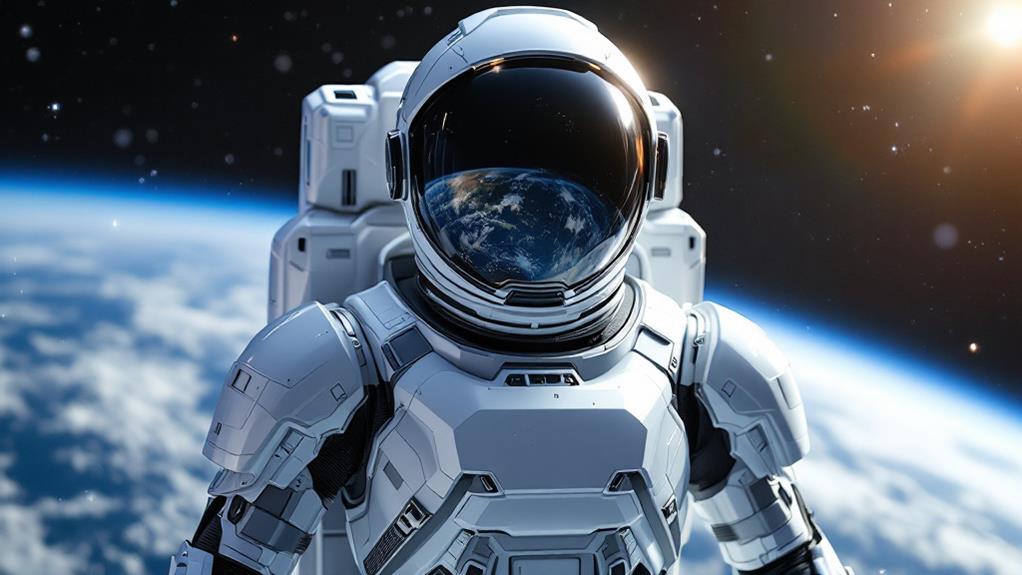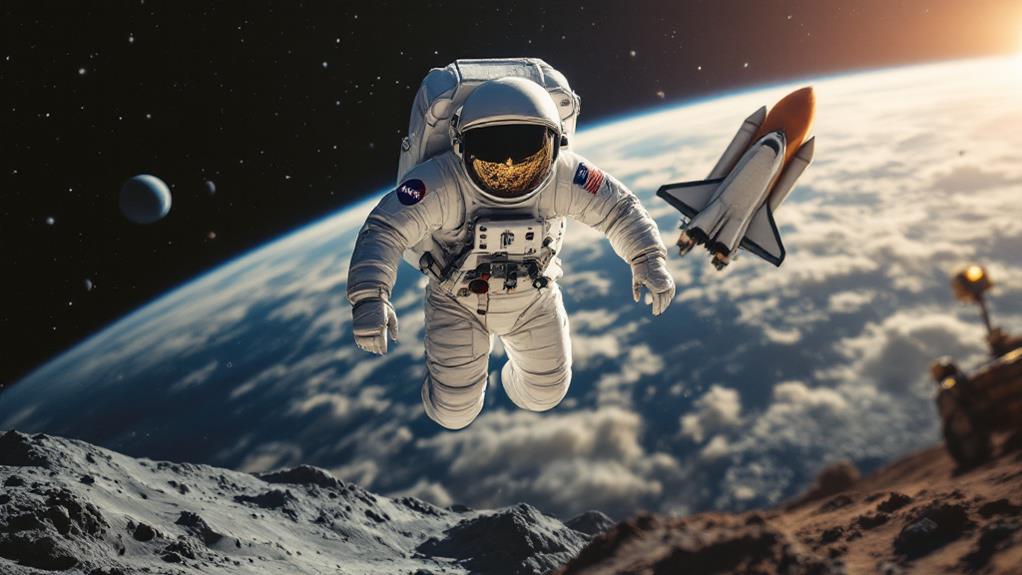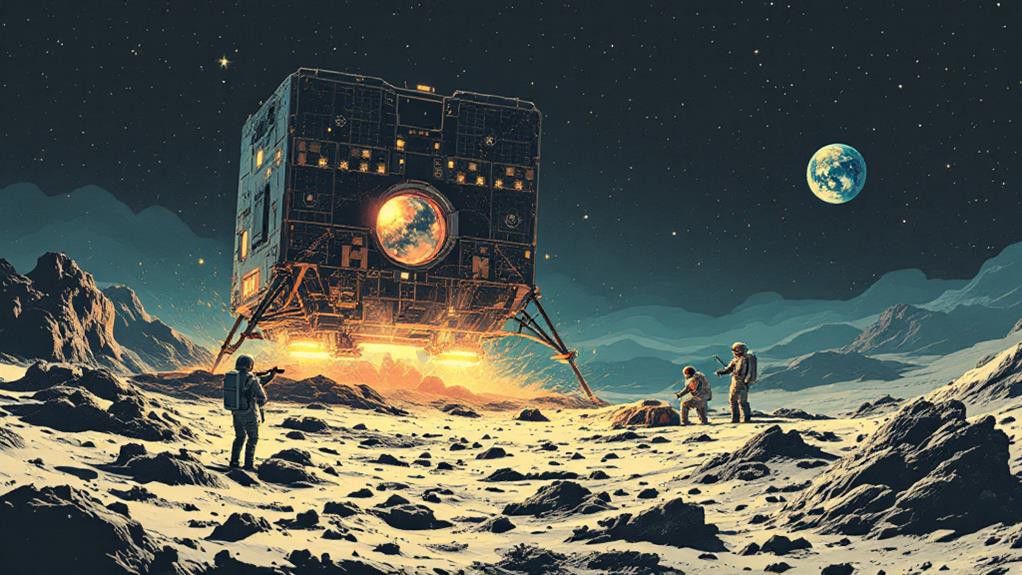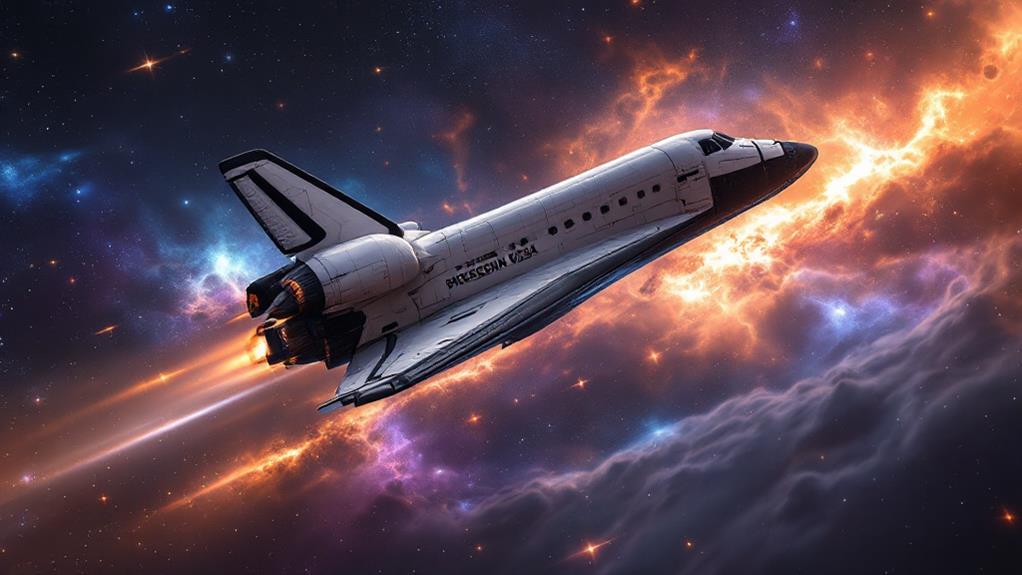Everyday Items You Didn’t Know Were Invented by NASA
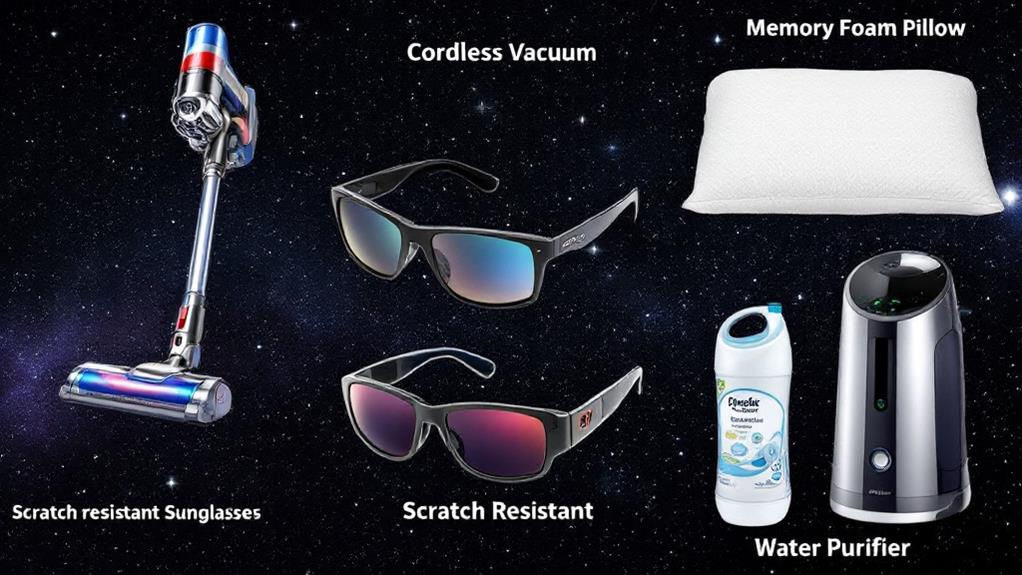
You might not realize it, but many everyday items in your home owe their origins to NASA's groundbreaking research. Memory foam mattresses, initially developed for astronauts' comfort, now improve your sleep. Cordless vacuum cleaners stem from NASA's tools for collecting lunar samples. The clear aligners that perfect your smile use the same technology as astronaut helmet visors. Even LEDs, originally for plant growth experiments, now illuminate your rooms efficiently. NASA's tech also transformed water purification systems, keeping millions hydrated. Wireless headsets, scratch-resistant lenses, portable computers, and infrared thermometers all trace back to space exploration efforts. Uncover the extraordinary impacts of space ingenuity here on Earth.
Memory Foam Mattresses
Memory foam mattresses, a staple in many bedrooms today, owe their origins to NASA's groundbreaking research. You might not realize it when you sink into a memory foam mattress, but you're experiencing a piece of sleep technology that was initially developed for astronauts. NASA originally created this revolutionary material in the 1960s to improve aircraft seat cushioning and boost crash protection. The goal was to provide astronauts with a superior level of comfort and support during the intense conditions of space travel.
Today, the comfort advancement that started with NASA has transformed how you sleep on Earth. Memory foam mattresses adapt to your body's shape, distributing weight evenly and reducing pressure points. This means you can enjoy a more restful night's sleep, waking up refreshed and without the aches and pains that traditional mattresses might cause.
Cordless Vacuum Cleaners
While you might appreciate a good night's sleep thanks to NASA's innovations, you'll also find their influence in keeping your home clean with cordless vacuum cleaners. These handy devices owe their existence to NASA's pioneering work in vacuum technology. Back in the 1960s, the space agency faced the challenge of collecting samples from the moon's surface during space exploration missions. They needed a portable, battery-powered drill that could function in the low-gravity environment without relying on traditional power sources.
NASA collaborated with Black & Decker to develop a lightweight, cordless tool with a high-efficiency motor. This partnership led to the creation of a drill used in the Apollo missions. The technology that powered the lunar drill laid the groundwork for the cordless vacuum cleaners you use today. The same principles of battery efficiency and compact motor design were adapted for household cleaning.
Scratch-Resistant Lenses

Innovation often finds its way into everyday life in the most unexpected ways, and scratch-resistant lenses are a perfect example. NASA's quest for optical innovation led to this development, originally intended to improve the durability of astronaut helmet visors. You're probably familiar with the frustration of scratched lenses, regardless of whether they're in your glasses or sunglasses. Thanks to NASA, you can enjoy clearer vision without the worry of damaging your eyewear.
In space, maintaining a clear view is vital for astronauts. NASA needed a solution to guarantee their helmet visors stayed free from scratches caused by tiny particles. This led to the creation of a special coating that increased lens durability. Eventually, this technology found its way to commercial eyewear. Now, when you pick out a pair of glasses, you're benefiting from NASA's pioneering work.
As you go about your day, regardless of whether driving, reading, or enjoying outdoor activities, you rely on this invisible yet powerful protection. It's fascinating to think that an optical innovation designed for space exploration has become an integral part of your daily routine. So next time you clean your lenses, give a nod to NASA's remarkable ingenuity.
Water Purification Systems
Water purification technology developed by NASA has transformed how we access clean drinking water today. Originally designed to support astronauts on long space missions, these groundbreaking systems guarantee they have a reliable source of water by recycling and filtering it efficiently. Now, you can find NASA's water filtration technology in everyday products that provide clean drinking water to millions around the world.
Imagine turning on your faucet and knowing the water you drink is free of contaminants. Thanks to NASA's advancements in water filtration, that's a reality. These systems use advanced filters to remove impurities, bacteria, and harmful chemicals, guaranteeing the water is safe for consumption. This technology isn't just limited to households. It's a game-changer in remote areas where access to clean drinking water is scarce.
Whether you're camping in the wilderness or living in an urban environment, the same principles apply. NASA's contribution to water purification has made portable filtration systems more effective and accessible. You might use a water bottle with a built-in filter or a larger system for your home, but the core technology remains the same. With NASA's breakthroughs, clean drinking water is no longer a luxury, but a necessity that's within reach.
Invisible Braces
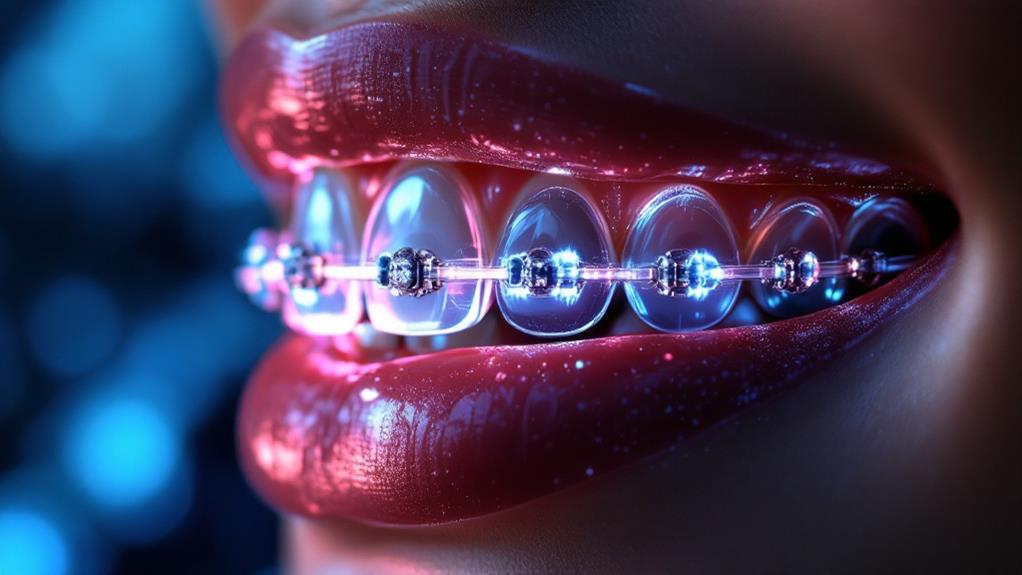
Invisible braces, a remarkable advancement in orthodontics, owe a part of their development to NASA's groundbreaking material science. You might be wondering how space exploration connects to your smile, but NASA's innovations often find their way into everyday life. In this case, the technology used to create clear aligners, a popular dental innovation, was inspired by materials initially designed for space helmets.
NASA developed a type of transparent polycrystalline alumina that was used in the visors of astronauts' helmets to withstand intense conditions. This material, known for its strength and clarity, provided the perfect foundation for creating nearly invisible dental aligners. When you wear clear aligners, you're benefiting from the same technology that keeps astronauts safe and allows them to see clearly in space.
This dental innovation has transformed orthodontics, offering you a discreet way to straighten teeth without the metal brackets and wires of traditional braces. The clear aligners are custom-made to fit your teeth, gradually shifting them into place. You can easily remove them to eat and brush your teeth, making them a convenient choice. Thanks to NASA's ingenuity, achieving a confident smile is more comfortable and less noticeable than ever before.
Freeze-Dried Foods
The marvel of preservation takes center stage with freeze-dried foods, a breakthrough that has roots deeply embedded in NASA's quest for space exploration. When astronauts ventured into the unknown, they needed sustenance that wouldn't spoil or lose nutritional value. Enter freeze-dried foods, a revolutionary method of food preservation that removes moisture while retaining crucial nutrients. NASA's development of space food guaranteed that astronauts could enjoy a variety of meals without the risk of spoilage or excessive weight, which is critical in space travel.
You might not realize it, but the freeze-drying technique has transcended its space origins, finding its way into everyday life. Think about your favorite instant coffee or those convenient camping meals. They owe their existence to the same technology that kept astronauts nourished among the stars. Freeze-dried products are lightweight, easy to store, and have an impressive shelf life, making them perfect for both adventurers and home pantries.
When you enjoy these foods, you're benefiting from NASA's creative spirit. The next time you savor a freeze-dried snack, remember it's not just space food; it's a reflection of human ingenuity and our relentless quest for exploration.
Portable Computer Devices
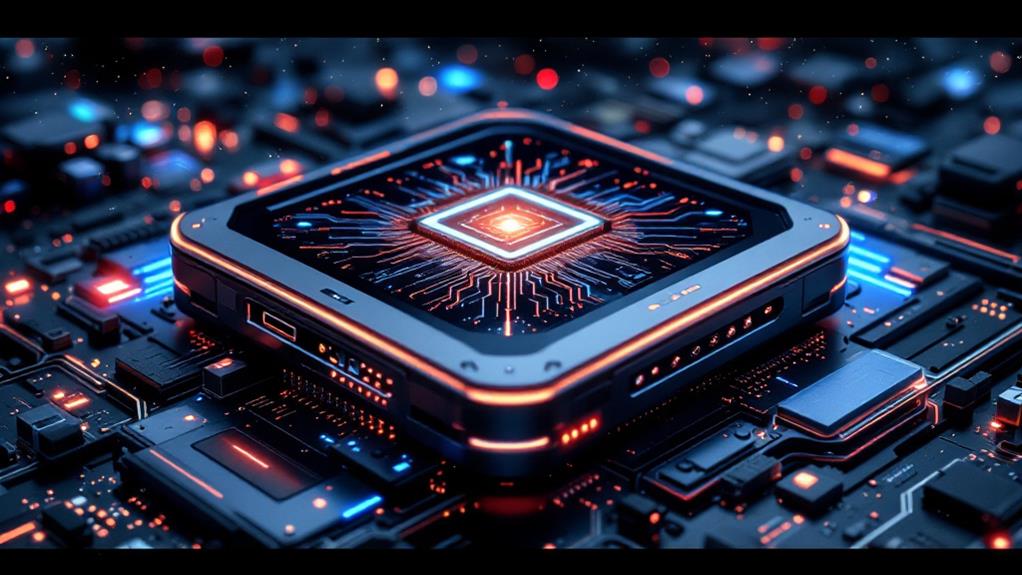
As you savor the benefits of freeze-dried foods, consider another innovation that emerged from NASA's pioneering spirit: portable computer devices. In the early days of space exploration, NASA faced unique challenges that required computing advancements. The need for compact, efficient, and reliable computing systems to operate in the demanding environment of space led to the development of technology that eventually found its way into the devices you use today.
When astronauts set out on missions, they needed computers that were not just powerful but also portable. NASA's push for miniaturization and durability in their computing systems paved the way for the portable computer devices you carry in your backpack or pocket. These advancements allowed engineers to create smaller, more efficient processors and components, integral to the smartphones, tablets, and laptops you rely on daily.
Because of NASA's innovations, the world saw a significant leap in technology that transformed bulky, room-sized computers into sleek, handheld devices. The computing advancements driven by the necessity of space exploration shifted the course of technology, empowering you with the ability to compute, communicate, and connect wherever you go, all thanks to those early space missions.
Infrared Thermometers
Infrared light, once primarily seen in space technology, has transformed the way we measure temperature, thanks to NASA's groundbreaking research. You might not realize it, but infrared thermometers, a staple in many households and industries, owe their existence to NASA's creative use of non contact technology. This technology was initially developed to measure the temperature of celestial bodies from a distance. Now, it's helping you measure everything from your child's fever to the heat of a car engine without ever touching the surface.
Imagine the convenience of pointing an infrared thermometer at an object and instantly knowing its temperature. This is possible because the device detects infrared radiation emitted by the object and converts it into a temperature reading. It's not only fast but also safe, especially when dealing with hazardous materials or high-temperature environments. You don't have to worry about contamination or injury since there's no direct contact required.
Whether you're cooking, conducting scientific experiments, or performing maintenance work, infrared thermometers provide an accurate, efficient solution for temperature measurement. Thanks to NASA's advancements, you've got a tool that's both practical and reliable, making your everyday tasks just a bit easier.
LED Technology

Long before they illuminated your homes and devices, LED technology found its roots in NASA's innovation. You might be surprised to learn that NASA used LEDs for plant growth experiments on space missions. The energy efficiency of LEDs was perfect for these experiments, as they needed a light source that generated minimal heat and consumed little power. But the benefits of LED technology didn't stop there.
LED applications have expanded far beyond space missions. Here are three key areas where you see their impact today:
- Residential Lighting: LEDs have replaced traditional incandescent bulbs, saving energy and reducing electricity bills with their exceptional energy efficiency.
- Electronic Displays: From your smartphone screens to large billboards, LEDs deliver bright, clear displays with minimal power consumption.
- Medical Devices: In medicine, LEDs are used in devices like phototherapy lamps, which help treat conditions like jaundice in newborns.
The adoption of LED technology in these areas demonstrates how NASA's pioneering work has brightened our everyday lives. So next time you switch on an LED light, remember its extraordinary path from space stations to your living room.
Wireless Headsets
In the domain of everyday technology, wireless headsets owe part of their origin to NASA's quest for improved communication systems. When astronauts communicated with mission control, they needed reliable, hands-free devices. This necessity paved the way for advancements that eventually trickled down to consumer tech, influencing how we use wireless headsets today.
NASA's focus on space communications meant they required tools that could operate effectively in demanding environments. The technology developed for this purpose laid the groundwork for modern wireless communication, including the Bluetooth technology we now use daily. Bluetooth, initially created to replace wired connections, became a crucial component in the evolution of wireless headsets. It allows you to connect devices seamlessly, without the hassle of tangled cords.
You benefit from this technology every time you make a call or listen to music without being tethered by wires. Such innovations have transformed how you interact with your devices, offering convenience and freedom. So, next time you put on your wireless headset, keep in mind that its origins are rooted in the space race, a reflection of NASA's enduring influence on everyday life.
